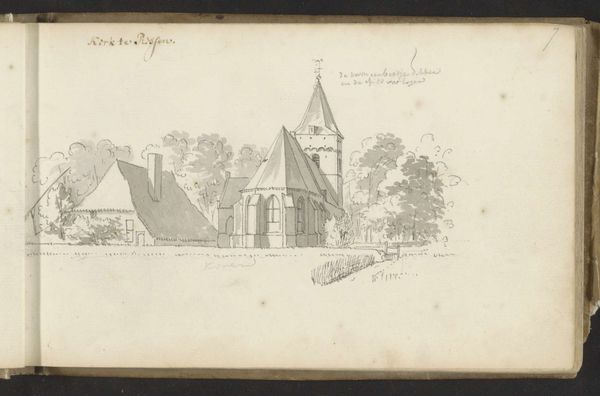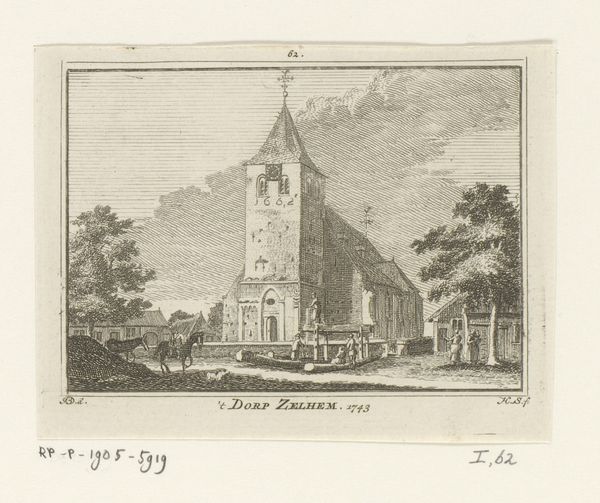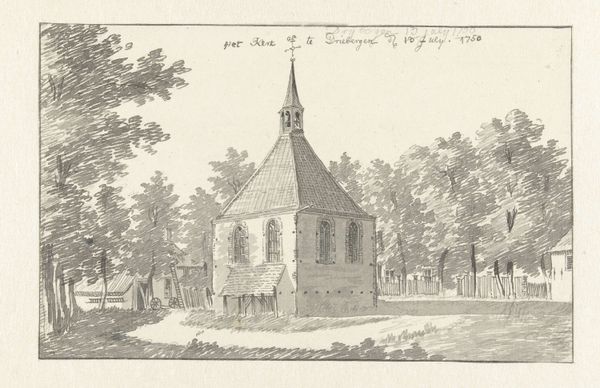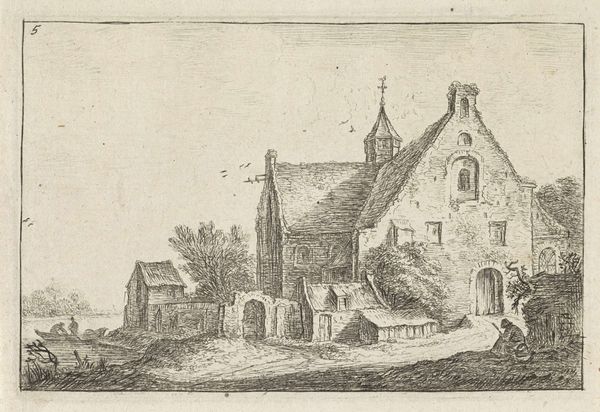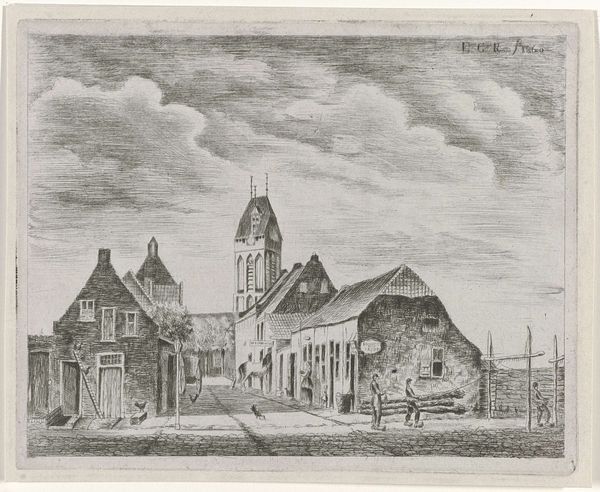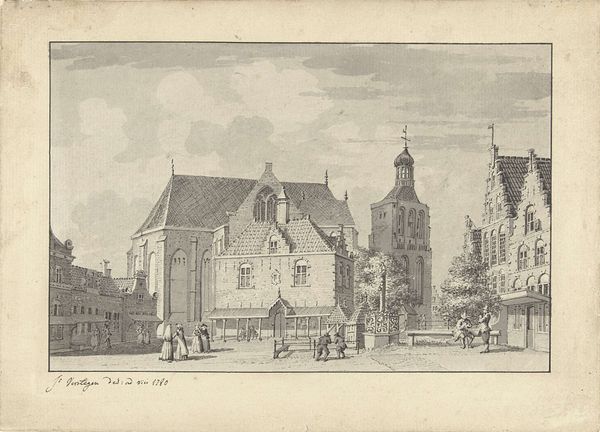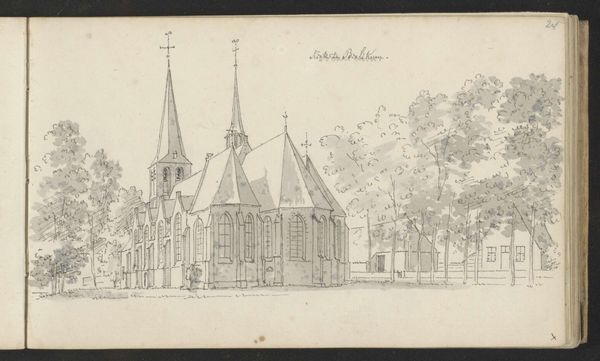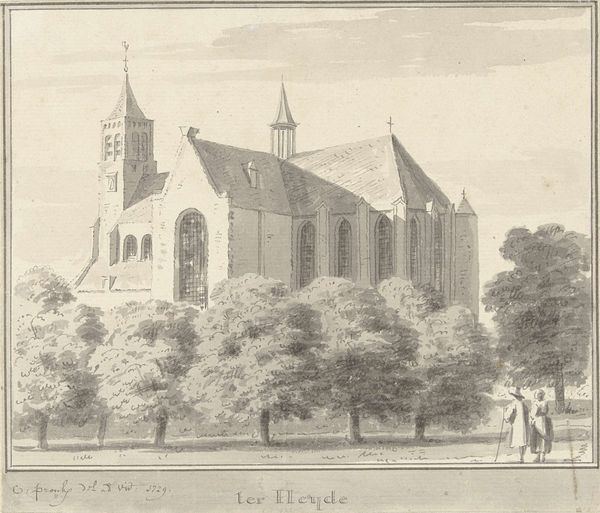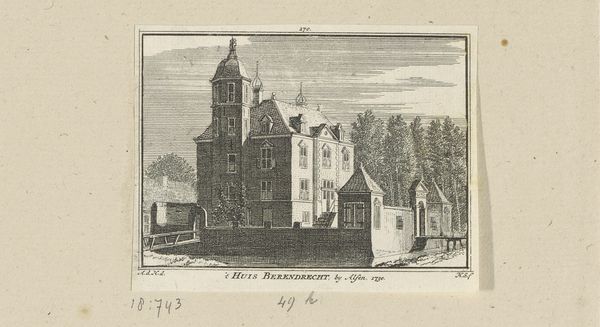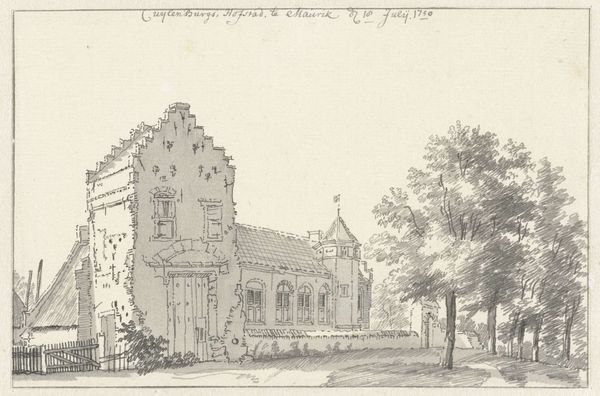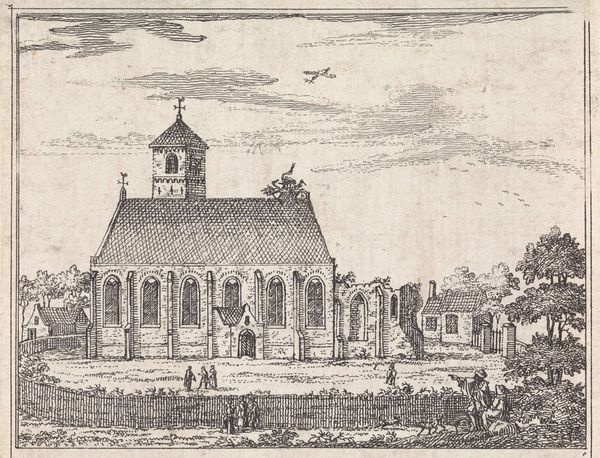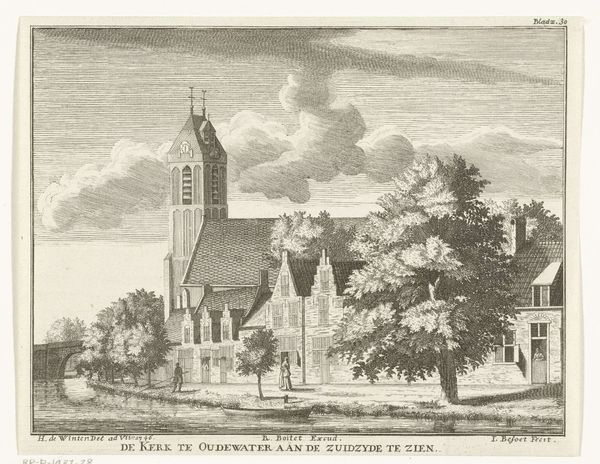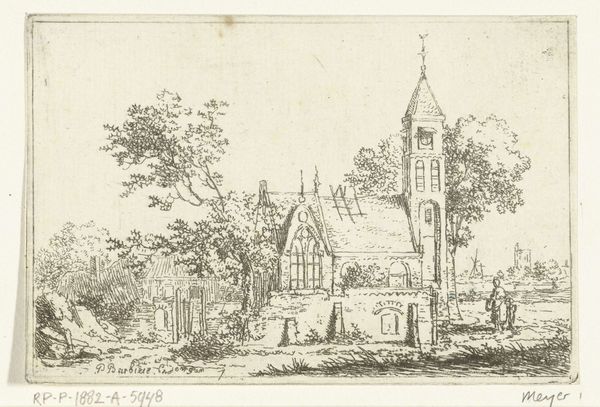
drawing, ink, pen
#
drawing
#
baroque
#
landscape
#
etching
#
ink
#
pen-ink sketch
#
pen
#
genre-painting
Dimensions: height 138 mm, width 180 mm
Copyright: Rijks Museum: Open Domain
Editor: This is Cornelis Pronk's "Het huis Vredestein bij Ravenswaaij, Gelderland," created in 1728. It’s a drawing using pen and ink. It's so detailed and delicate, capturing this impressive building. I'm curious, what do you see in this piece beyond just the depiction of the house? Curator: As a materialist, I’m drawn to how Pronk utilizes pen and ink not just for representation, but to subtly denote class and labor. Notice the precise, almost architectural rendering of the Vredestein house, contrasted with the softer, less defined rendering of the surrounding trees and figures. Editor: Yes, the house definitely takes precedence in its crisp depiction. Curator: Exactly. The level of detail speaks to the value placed on property and ownership in 18th-century Dutch society. The drawing itself, as a commodity, participated in this system. Consider also the *labor* involved—Pronk’s skilled hand transforming relatively simple materials into a representation of wealth and status. This wasn’t mass-produced; it was an artisanal craft reflecting a very specific social hierarchy. Does this lens alter your perspective? Editor: It does. I hadn't thought about the labor that goes into such a detailed work. It wasn’t just about the aesthetics of the building, but about showcasing a certain lifestyle and skill. So the very *making* of the artwork, with specific, expensive-seeming tools like pen and ink rather than something more "accessible", speaks volumes. Curator: Precisely. We are not simply viewing a landscape; we are engaging with a material record of social values and economic relationships. Editor: That makes me think differently about what I value in art and what questions to ask about how it came to be. Thanks. Curator: My pleasure! It’s essential to always question how materials and making contribute to the meaning of the work.
Comments
No comments
Be the first to comment and join the conversation on the ultimate creative platform.

